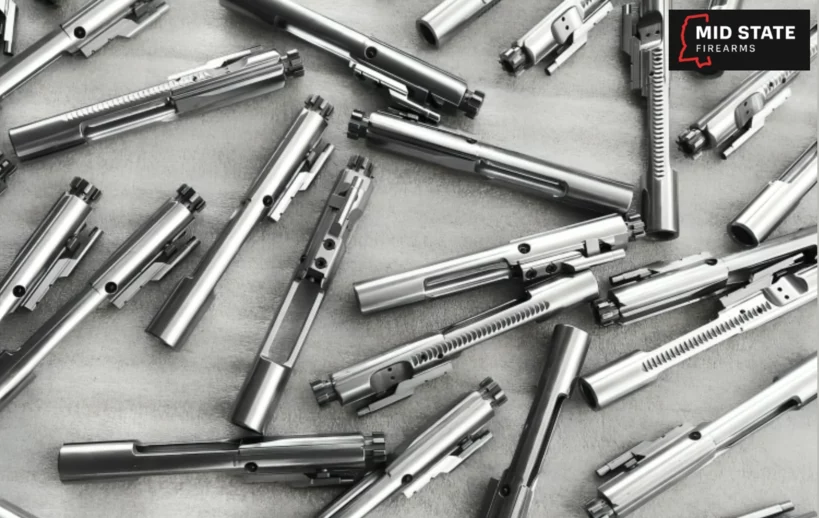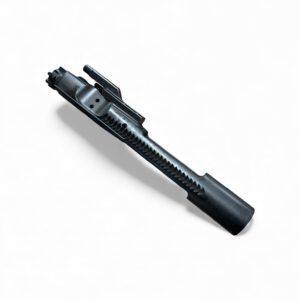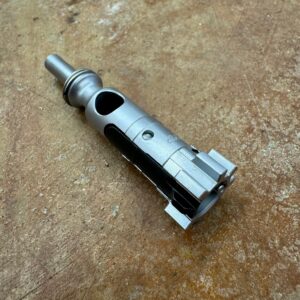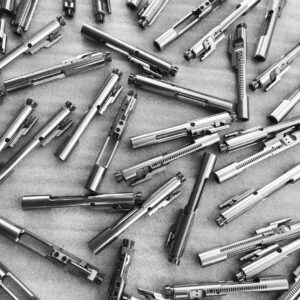An AR-15 Bolt Carrier Group (BCG) stands as one of the essential parts of the rifle because it both feeds ammunition into the chamber and ejects empty shells to enable consistent operation. The selection of your BCG determines how reliable along with how long-lasting and performing your rifle system will be. This blog post provides exhaustive information regarding AR15 bolt carrier groups by explaining their materials together with coatings and testing criteria as well as essential elements to assess upon purchase.
What Is a Bolt Carrier Group?
An AR-15 rifle functions with the bolt carrier group (BCG) as its main operating mechanism. With every trigger pull, it executes functions of firing cartridge extraction and ejection as well as reloading new cartridges.
A nonfunctioning AR15 BCG prevents proper cycling, which results in stoppages such as misfeeds and malfunctions.
An AR15 bolt carrier needs to remain both robust and receive proper maintenance to produce consistent performance during tough operational scenarios.
Components of an AR-15 Bolt Carrier Group
An AR BCG includes essential components that function together to deliver reliability as well as essential operational aspects:
- Bolt – The bolt element engages with the barrel extension, which creates a safe chamber for firing purposes.
- Carrier – The Carrier component functions as the bolt holder before operating it through each cycle.
- Gas Key – Gas transfers through the Gas Key from the gas tube which drives the cyclic motion of the action.
- Cam Pin – The Cam Pin provides directional control to the bolt which ensures proper locking besides unlocking operations.
- Firing Pin – The Firing Pin uses its force to strike the primer, thus activating the cartridge.
- Extractor – The extractor functions as a device that removes utilized casings from inside the chamber.
Under different operational conditions, all individual components play an essential role that determines its performance.
Full Auto vs. Semi-Auto BCG
Most shooters ask if using an M16 bolt carrier makes their rifle perform better than an ordinary one. The full-auto AR15 bolt carrier group works like an ordinary version in personal AR-15 configurations despite weighing more than semi-auto models. The heavier component makes the firearm function with higher consistency while softening the kickback experience. While additional components enable automatic fire with a full-automatic carrier group, it does not turn a civilian AR-15 rifle into an automatic.
Best Materials for an AR-15 BCG
The type of material it is made from decides how long it will last and work effectively. The most common materials include:
- Carpenter 158 Steel – The mil-spec standard for high-strength, battle-tested durability.
- 9310 Steel – this offers similar strength to Carpenter 158 but with improved toughness.
- 8620 Steel – this shows its value as the best material for the carrier component because of its natural resistance to wear.
A high-quality AR built with Carpenter 158 or 9310 steel will outlast other materials.
Best Coatings and Finishes for an AR-15 BCG
The carrier group shield protects itself against both mechanical damage and rust formation. Common finishes include:
- Phosphate – the traditional mil-spec finish offers durability and a non-reflective surface.
- Nitride – it provides a slick, corrosion-resistant surface with easy cleaning.
- Nickel Boron coating – brings extraordinary smoothness to fuel components while making them wear better.
Your preference between low maintenance and maximum durability determines the best finish type for your AR-15 BCG.
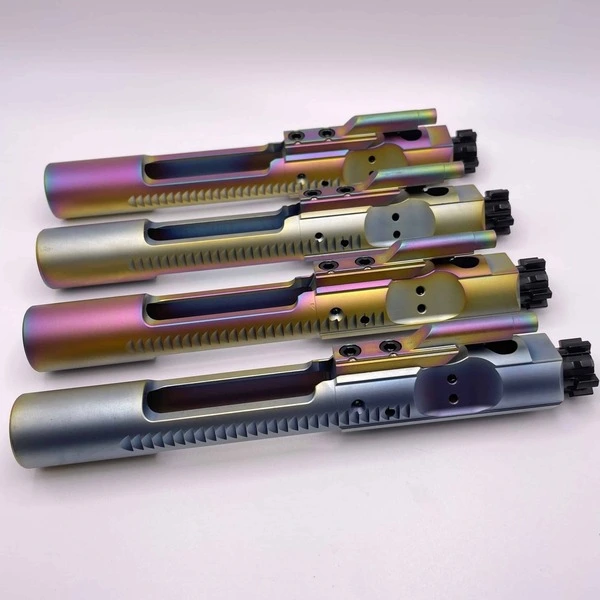
Standard vs. Lightweight BCGs
People commonly use standard-weight bolt carrier designs that work dependably in all situations. Lightweight carrier groups help shooters control their firearm more easily by decreasing overall part weight to speed up rapid-fire shots. Competitive shooters pick lightweight BCG AR components because they enable faster shooting, but the standard BCG AR15 model demonstrates greater dependability.
Understanding How the Gas Key Installation Affects BCG Performance
Correctly staking a gas key maintains secure bolt strength so leaks and firing problems do not occur. Staking an AR 15 bolt carrier group correctly protects its reliability during heavy shooting sessions.
Testing Standards for a Reliable BCG
The process of rigorous testing determines its level of durability and quality. Key testing methods include:
- The High-Pressure Testing procedure guarantees that bolts can endure extreme chamber pressures during use.
- Magnetic Particle Inspection identifies tiny fractures as well as minor defects in components.
A BCG AR15 needs to pass HPT and MPI standards simultaneously since this ensures the best combination of safety with reliability.
Compatibility with Different AR-15 Calibers
They can only work with specific lower and upper receiver parts. Some common cartridge options include:
- 5.56 NATO / .223 Remington – this is the standard AR-15 bolt carrier group size.
- .300 Blackout BCG – A .300 Blackout AR needs a standard bolt carrier, however sometimes needs a tunable gas block for installation.
- 6.5 Grendel & 7.62×39 – this requires a different bolt design due to case size.
Be sure that it works correctly with your rifle’s ammo type.
Best BCGs for Different Uses
Your selection of a BCG AR15 depends on your specific needs with the weapon.
- Home Defense – Opt for a durable, well-tested AR 15 carrier group with a nitride or phosphate finish.
- Competition shooting – In competition shooting a lighter bolt carrier reduces cycling time to allow for quicker follow-ups.
- Hunting – Nickel Boron coatings make the field hunting process faster and easier.
- Tactical and duty use – When using a full-auto AR-15 bolt carrier group it provides superior durability for tactical and duty requirements.
How to Maintain an AR-15 BCG
To properly maintain, you have to follow these steps to ensure maximum efficiency.
- Cleaning – Clean off built-up carbon deposits with approved solvent and brush tools.
- Lubrication – Apply top-quality gun lubricants to areas where parts rub together properly.
- Inspection – Check if wear and tear are severe, plus scan for cracks in the metal and loose gas key screws.
Regularly servicing your bolt carrier increases its durability and protects against unplanned problems.
Final Thoughts
Understanding the dissimilar AR 15 bolt carrier group options enables you to select the best one for your specific tactical, competition, or easy maintenance needs. Your investment in a premium carrier group made to your specifications will produce superior functions and limit maintenance needs in your firearm.

